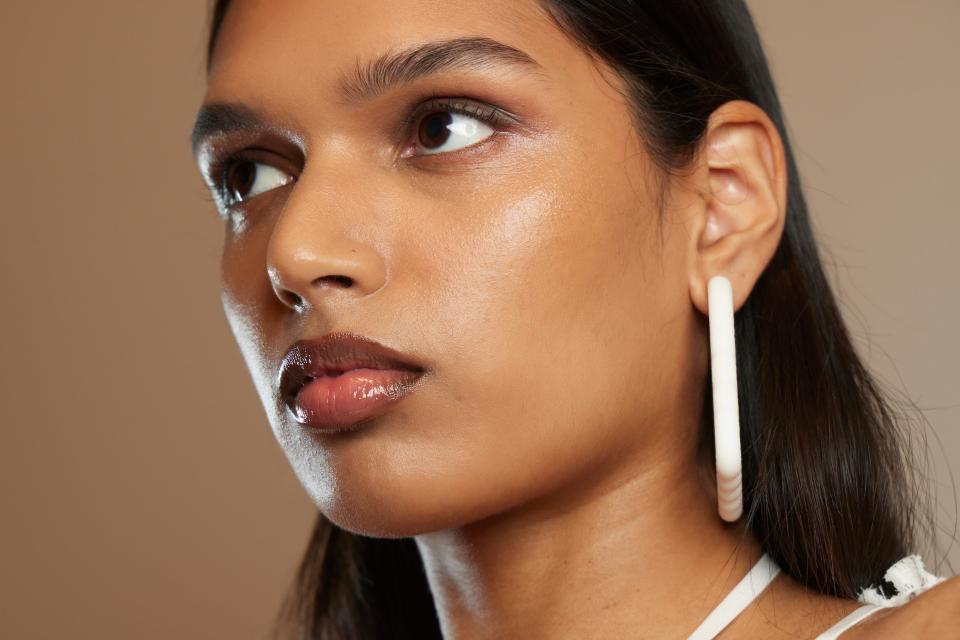What is dermaplaning? Everything you need to know about the exfoliating treatment

Just one method of removing facial hair, dermaplaning – essentially shaving the fuzz (known as vellus) off your face – has become more commonplace over the past few years. And since the beginning of the global pandemic, sales of dermaplaning devices have risen dramatically. CurrentBody, which stock the biggest selection of electrical health and beauty products in the world, has seen a 58 per cent uplift in its dermaplaning category since lockdown. But should we be doing this ourselves at home?
What is dermaplaning?
For those unfamiliar with the concept, "dermaplaning is one of the easiest ways of removing unwanted hair from the face at home,” explains the CEO of CurrentBody Laurence Newman. “In the same way that shaving works, it uses a painless blade to gently scrape away facial hair (often referred to as 'peach fuzz') and rids the skin of any build-up of dead skin cells, all which can contribute to making your skin look dull or uneven. Just like an exfoliation, it removes any barriers which would stop your skincare from penetrating – meaning your products often work much more effectively after a treatment.”
Newman explains that they were already seeing increased interest in the category pre-lockdown, "but the closure of clinics and salons has clearly boosted its popularity to treat at home".

The pros and cons
On the one hand, cosmetic doctor Dr Jonquille Chantrey explains that "removal of vellus hair can allow make-up to sit more smoothly, give skin more of a light refraction and a glow as it is also essentially creating an exfoliation as well as hair removal". Plus, "the hair itself can make women quite self-conscious, particularly if it spans most of the lower cheek.”
However, there are major downsides to dermaplaning if it's not carried out properly. “Over the last two years I have treated scarring cases of patients that have seen trained practitioners for dermaplaning but the scalpel has caught on hair and been dragged on the skin, leading to some permanent scarring,” says Dr Chantrey. “Even with a guard it could lead to some damage if not carried out carefully.” Another con is that “many patients think they have vellus hair and they don’t. When the wrong type of hair is dermaplaned it can lead to thicker regrowth.”
How often would you need to dermaplane?
“For truly vellous hair that is affecting the psychological health of the patient then treatment can be performed every four to six weeks,” Dr Chantrey adds.

Who should avoid dermaplaning?
“Those with active acne, infection or cold sores in the areas of concern," offers Dr Chantrey. Why? "Due to the spreading of potential bacteria or virus this can lead to a wider spread infection that can cause more inflammation, sometimes pigmentation and even scarring."
Another reason to steer clear, she explains, is "if this was used on darker hair in a patient with medical conditions such as polycystic ovaries disease (who suffer with excess hair), misuse could lead to potential worsening of the hair growth".
Should people be undertaking this themselves at home?
"In my expert opinion, this should be performed by skin professionals only," says Dr Chantrey. "This requires a diagnosis to advise the patient of their hair and skin type, as well as assessing if there is any underlying medical diagnosis contributing to symptoms. Incorrect treatment can lead to complications as observed above."

What else should people know when considering dermaplaning?
One alternative is focusing on skincare products that can offer similar results. "A much better way to deeply exfoliate and remove the dead build-up of thick skin cells is to actively manage this at home with skincare," describes Dr Chantrey. For example, "exfoliants that can brighten the skin, increase cell turnover and make it smoother can be safe, powerful ways to get that glow and allow make-up to glide on. I recommend to my patients an exfoliation regime that includes a couple of drops of SkinCeuticals Retexturing Activator serum, twice a week. When combined with daily SkinCeuticals Glycolic Renewal Cleanser this really shifts those dead cells and brightens. My patients swear by them".
Other facial hair-removal options available on the market–both at-home and in-salon/clinic–include waxing, threading, laser treatment, electrolysis, plucking, and the use of hair removal cream. Read all about facial hair removal here.
In need of some at-home inspiration? Sign up to our free weekly newsletter for skincare and self-care, the latest cultural hits to read and download, and the little luxuries that make staying in so much more satisfying.
Plus, sign up here to get Harper’s Bazaar magazine delivered straight to your door.
You Might Also Like


